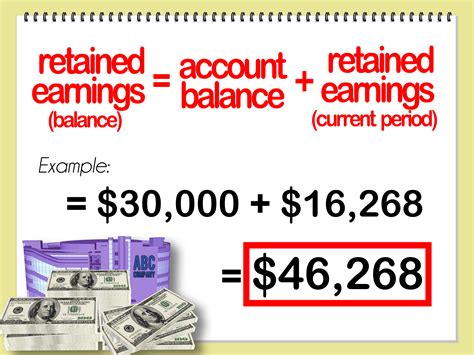How to Find Retained Earnings: A Comprehensive Guide
Retained earnings represent the accumulated profits of a company that haven't been distributed as dividends to shareholders. Understanding how to find this crucial financial metric is vital for investors, analysts, and anyone interested in a company's financial health. This guide will walk you through several methods to locate this key piece of financial data.
Understanding Retained Earnings
Before diving into how to find retained earnings, let's briefly clarify what they are. Retained earnings are essentially the company's savings. They represent the cumulative net income earned over time, minus any dividends paid out to shareholders. A high retained earnings balance generally suggests a profitable and financially stable company, although it's crucial to analyze this figure within the broader context of the company's financial statements.
Where to Find Retained Earnings: Key Sources
You can usually locate retained earnings information in several places:
1. The Balance Sheet
The balance sheet, also known as the statement of financial position, is the primary source for finding retained earnings. It's one of the three core financial statements (along with the income statement and cash flow statement). Look for the equity section of the balance sheet. Retained earnings will be listed prominently within this section, often alongside other equity accounts like common stock and additional paid-in capital.
Example:
A simplified balance sheet might show:
- Equity:
- Common Stock: $XXX
- Retained Earnings: $YYY
- Total Equity: $XXX + $YYY
2. The Statement of Changes in Equity (or Statement of Stockholders' Equity)
This statement provides a detailed breakdown of how a company's equity has changed over a specific period. It explicitly shows the beginning balance of retained earnings, the additions (net income), the subtractions (dividends), and the ending balance of retained earnings. This statement offers a more transparent view of the retained earnings' evolution. This is particularly useful for understanding the impact of profitability and dividend payouts on the company's overall equity.
Key Elements to Look For:
- Beginning Retained Earnings: The retained earnings balance at the start of the accounting period.
- Net Income (or Loss): The company's profit or loss for the period. This directly affects retained earnings.
- Dividends Paid: The amount of dividends distributed to shareholders during the period. This reduces retained earnings.
- Ending Retained Earnings: The retained earnings balance at the end of the accounting period.
3. Online Financial Databases
Many online financial databases, such as Bloomberg, Thomson Reuters Eikon, and Yahoo Finance, provide access to a company's financial statements, including the balance sheet and statement of changes in equity. These platforms often offer convenient ways to search and download the necessary financial data. Remember, while these resources are helpful, it's always best to consult the company's official filings for the most accurate information.
4. Company's Annual Report (10-K Filing)
Publicly traded companies are required to file annual reports (10-K filings in the US) with the relevant securities regulatory body (SEC in the US). These reports contain comprehensive financial information, including the balance sheet and statement of changes in equity where you can find the retained earnings figures.
Interpreting Retained Earnings
Remember, a high retained earnings figure doesn't automatically equate to a superior company. It's crucial to consider other financial metrics and factors before making investment decisions. Analyzing retained earnings in conjunction with factors like revenue growth, profitability margins, and debt levels provides a more holistic understanding of a company's financial health. Analyzing the trend of retained earnings over several years can also provide valuable insights into a company's financial performance and management's strategies.
By utilizing the methods described above, you can confidently locate and interpret retained earnings, contributing to a more informed understanding of a company's financial standing. Remember to always cross-reference information from multiple sources to ensure accuracy.
